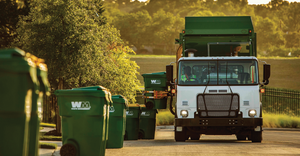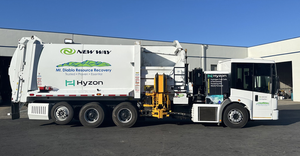What the Final 2014 Occupational Fatality Data Means for the Waste & Recycling Industry
The U.S. Bureau of Labor Statistics (BLS) updated the figures for industry and occupational fatality data, for which preliminary results were originally released in September 2015.
The occupation of refuse and recycling collector remained the fifth most dangerous in the country. There were a total of 27 fatalities in 2014, down from 33 in 2013. Of those, 18 occurred in the private sector and nine in the public sector.
The fatality rate for refuse and recycling collectors rose to 35.8 per 100,000 workers for the year in 2014 from a rate of 33 in 2013 and 32.3 in 2012.
“We have a high incidence rate in the industry, so that’s what we’re focusing on,” says Bret Biggers, director of standards and statistics with the National Waste & Recycling Association (NWRA), which represents the private waste and recycling industry.
The BLS numbers also looked at industry-wide figures, showing solid waste collection as having 40 fatalities in 2014. Of those, 27 occurred in the private sector and 13 in the public sector. Refuse and recyclable material collectors account for two-thirds of the fatalities in the solid waste collection industry.
The NWRA says understanding the data is essential for driving improvements over the long-term within the industry and informs its series of initiatives as part of a three-year safety plan that was formalized during a Safety Summit the group organized in March.
A data task force was formed during the summit that is now engaged in the work of improving current data metrics used with the industry as part of its long-term plan to reduce fatalities, injuries and accidents.
“A series of structured activities are driven by data like this,” says Chris Doherty, vice president and chief marketing officer for the NWRA. “Having all the data is the baseline for driving long-term improvements.”
For example, three of the fatalities in the industry in 2012 and 2013 were attributable to exposure to extreme heat. So that’s why “Water, Rest and Shade” is the theme for the association’s next Safety Stand Down, taking place the week of May 16. (The Safety Stand Downs are a series of events the NWRA is organizing in collaboration with companies and other associations meant to educate and reinforce best practices on different safety topics throughout the year.)
The Solid Waste Association of North America (SWANA), which includes 8,300 public and private sector professionals, has also made safety a point of emphasis.
"We will continue to provide resources and training in our effort to reduce the frequency of these tragic incidents, including our new Safety Ambassador program. We are partnering with several other associations to broaden the impact of these efforts. Nothing we do is more important,” SWANA CEO and Executive Director David Biderman said in an emailed statement. "I don't want anyone getting killed on the route, at the landfill, or at a MRF. And our focus is on improving safety across the entire industry, and we intend to provide resources to everyone—members and non-members, in the U.S. and Canada, in both the public and private sectors."
About the Author
You May Also Like




